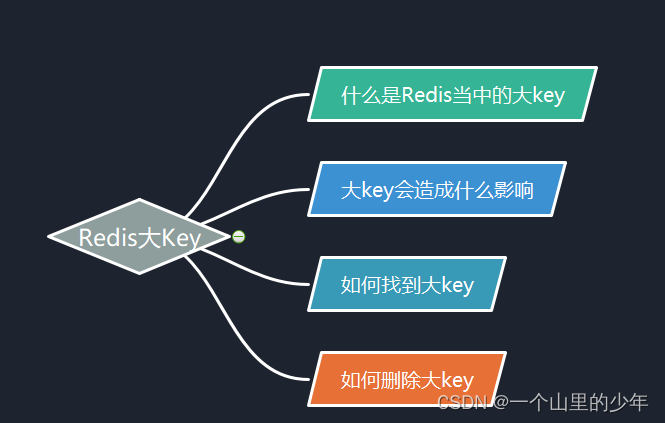一、缓存预热的必要性
在一个高并发的系统中,如果缓存刚启动时是空的,所有的请求都会直接打到数据库,这可能会导致以下问题:
- 高延迟:由于数据不在缓存中,所有请求都需要访问后端数据库,这会增加响应时间。
- 数据库压力大:在系统启动的初期,由于缓存中没有数据,大量请求直接命中数据库,这会造成数据库的瞬时负载剧增,可能导致数据库性能下降甚至宕机。
- 缓存雪崩:大量请求同时访问缓存和数据库可能引发缓存雪崩,即因缓存不可用或缓存命中率低导致的数据库过载问题。
通过缓存预热,可以提前将热点数据加载到缓存中,从而在系统启动时立即提供高效的服务,避免上述问题。
二、缓存预热的实现策略
在Java中,缓存预热可以通过多种方式实现,以下是一些常见的策略:
- 应用程序启动时预加载
- 定时任务加载
- 数据访问日志分析
- 手动触发缓存预热
1. 应用程序启动时预加载
在应用程序启动时,可以编写代码将热点数据加载到缓存中。这种方式适合于缓存的数据量不大且数据固定的场景。
Java实现示例(使用Jedis):
|
1 2 3 4 5 6 7 8 9 10 11 12 13 14 15 16 17 18 19 20 21 22 23 24 25 26 27 28 29 30 31 32 33 34 35 |
import redis.clients.jedis.Jedis;
import java.util.HashMap; import java.util.Map;
public class CachePrewarmingOnStartup {
private static final String REDIS_HOST = "localhost"; private static final int REDIS_PORT = 6379;
private Jedis jedis;
public CachePrewarmingOnStartup() { this.jedis = new Jedis(REDIS_HOST, REDIS_PORT); }
public void prewarmCache() { // 模拟加载一些热点数据到缓存中 Map<String, String> dataToCache = new HashMap<>(); dataToCache.put("user:1001", "Alice"); dataToCache.put("user:1002", "Bob"); dataToCache.put("product:2001", "Laptop"); dataToCache.put("product:2002", "Phone");
for (Map.Entry<String, String> entry : dataToCache.entrySet()) { jedis.set(entry.getKey(), entry.getValue()); System.out.println("预热缓存:" + entry.getKey() + " -> " + entry.getValue()); } }
public static void main(String[] args) { CachePrewarmingOnStartup cachePrewarming = new CachePrewarmingOnStartup(); cachePrewarming.prewarmCache(); } } |
在这个示例中,prewarmCache方法在应用程序启动时被调用,将一些预定义的热点数据加载到Redis缓存中。
2. 定时任务加载
通过定时任务定期执行缓存预热逻辑,可以确保缓存中的数据始终是最新的。此方式适用于需要定期更新缓存的场景。
Java实现示例(使用ScheduledExecutorService):
|
1 2 3 4 5 6 7 8 9 10 11 12 13 14 15 16 17 18 19 20 21 22 23 24 25 26 27 28 29 30 31 32 33 34 35 36 37 38 39 |
import redis.clients.jedis.Jedis;
import java.util.HashMap; import java.util.Map; import java.util.concurrent.Executors; import java.util.concurrent.ScheduledExecutorService; import java.util.concurrent.TimeUnit;
public class ScheduledCachePrewarming {
private static final String REDIS_HOST = "localhost"; private static final int REDIS_PORT = 6379; private Jedis jedis;
public ScheduledCachePrewarming() { this.jedis = new Jedis(REDIS_HOST, REDIS_PORT); }
public void prewarmCache() { Map<String, String> dataToCache = new HashMap<>(); dataToCache.put("user:1001", "Alice"); dataToCache.put("user:1002", "Bob"); dataToCache.put("product:2001", "Laptop"); dataToCache.put("product:2002", "Phone");
for (Map.Entry<String, String> entry : dataToCache.entrySet()) { jedis.set(entry.getKey(), entry.getValue()); System.out.println("预热缓存:" + entry.getKey() + " -> " + entry.getValue()); } }
public static void main(String[] args) { ScheduledCachePrewarming cachePrewarming = new ScheduledCachePrewarming(); ScheduledExecutorService scheduler = Executors.newScheduledThreadPool(1);
// 每隔5分钟执行一次缓存预热任务 scheduler.scheduleAtFixedRate(cachePrewarming::prewarmCache, 0, 5, TimeUnit.MINUTES); } } |
在这个示例中,使用Java的ScheduledExecutorService来定期执行缓存预热操作。这样可以确保缓存数据始终是最新的。
3. 数据访问日志分析
通过分析历史数据访问日志,可以识别出最常被访问的热点数据。将这些热点数据定期加载到缓存中,从而实现有效的缓存预热。
实现步骤:
- 收集日志:收集数据访问的日志,记录每个请求的Key和访问次数。
- 分析日志:定期分析日志,识别访问频率最高的Key。
- 预热缓存:根据分析结果,将热点数据加载到缓存中。
此方法需要一定的日志分析能力,可以使用大数据技术(如Hadoop、Spark)来处理和分析大规模日志。
4. 手动触发缓存预热
在一些场景下,可以由运维人员或应用管理员手动触发缓存预热操作。例如,在系统更新或发布新版本时,可以手动执行一个脚本,将一些关键数据加载到缓存中。
Java实现示例(结合命令行输入触发缓存预热):
|
1 2 3 4 5 6 7 8 9 10 11 12 13 14 15 16 17 18 19 20 21 22 23 24 25 26 27 28 29 30 31 32 33 34 35 36 37 38 39 40 41 42 43 44 45 |
import redis.clients.jedis.Jedis;
import java.util.HashMap; import java.util.Map; import java.util.Scanner;
public class ManualCachePrewarming {
private static final String REDIS_HOST = "localhost"; private static final int REDIS_PORT = 6379; private Jedis jedis;
public ManualCachePrewarming() { this.jedis = new Jedis(REDIS_HOST, REDIS_PORT); }
public void prewarmCache() { Map<String, String> dataToCache = new HashMap<>(); dataToCache.put("user:1001", "Alice"); dataToCache.put("user:1002", "Bob"); dataToCache.put("product:2001", "Laptop"); dataToCache.put("product:2002", "Phone");
for (Map.Entry<String, String> entry : dataToCache.entrySet()) { jedis.set(entry.getKey(), entry.getValue()); System.out.println("预热缓存:" + entry.getKey() + " -> " + entry.getValue()); } }
public static void main(String[] args) { ManualCachePrewarming cachePrewarming = new ManualCachePrewarming(); Scanner scanner = new Scanner(System.in);
System.out.println("输入 'prewarm' 来手动触发缓存预热:"); while (true) { String input = scanner.nextLine(); if ("prewarm".equalsIgnoreCase(input)) { cachePrewarming.prewarmCache(); System.out.println("缓存预热完成!"); } else { System.out.println("无效输入,请输入 'prewarm' 进行缓存预热。"); } } } } |
在这个示例中,用户可以通过命令行输入prewarm来手动触发缓存预热操作。
三、缓存预热的最佳实践
-
选择合适的数据预热:在进行缓存预热时,应选择访问频率高、数据量较小的热点数据进行预热,避免将所有数据加载到缓存中导致内存压力过大。
-
设置合理的过期时间:对于缓存预热的数据,应设置合理的过期时间,以防止数据过期导致的缓存穿透问题。过期时间应根据数据的更新频率和业务需求来确定。
-
监控缓存命中率:在预热缓存后,应监控缓存的命中率和数据库的访问频率,确保预热效果达到预期。如果命中率低于预期,可以考虑调整预热的数据集合或频率。
-
自动化与手动结合:缓存预热可以结合自动化脚本和手动操作。对于定期和常规数据,可以使用自动化脚本进行预热;对于特殊情况下的热点数据,可以由运维人员或应用管理员手动触发预热。
-
考虑缓存一致性:在缓存预热过程中,应确保缓存和数据库的一致性,特别是在数据更新频繁的场景中。可以通过数据库更新事件来触发缓存的更新或失效。
四、总结
缓存预热是提高系统性能和用户体验的重要手段,特别是在高并发和访问频繁的应用场景中。通过缓存预热,可以有效减少缓存未命中情况,降低数据库压力,提高系统的响应速度。本文介绍了多种缓存预热策略及其在Java中的实现方法,开发者可以根据实际需求选择合适的策略来优化系统性能。通过合理配置和管理缓存,可以显著提高系统的稳定性和可用性。


